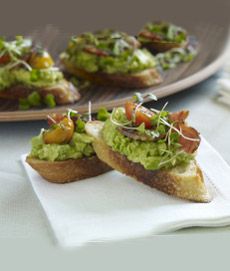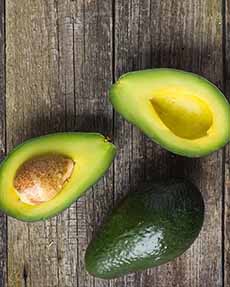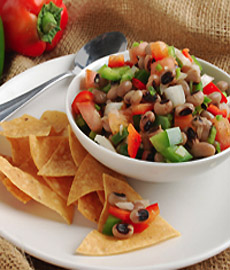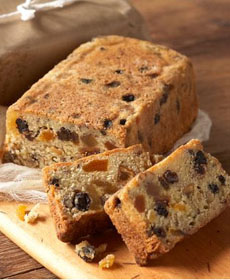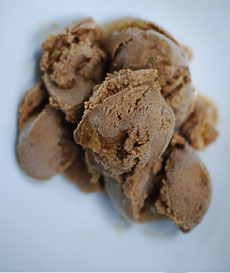|
This recipe, from Brandon Matzek’s blog, KitchenKonfidence.com, was adapted from a recipe created by Ethan Frisch and Max Falkowitz, and sent to us from the Craft Beer Association.
Made with candied ginger, cinnamon, clove, allspice and Belgian-style ale, the ice cream smells and tastes like gingerbread. The Trappist ale (we used Duvel, one of our favorites) adds a delicious depth of flavor. Brandon Matzek’s serving suggestion is to scoop the ice cream over a warm slice of gingerbread, topped with sautéed apples.
You can serve a glass of Belgian ale along with the dessert. Or a cup of spice tea.
GINGERBREAD-ALE ICE CREAM RECIPE
Ingredients
Serves: 8 – 10
2 cups heavy cream
1 cup whole milk
1-2/3 cups Trappist ale, divided
5 tablespoons molasses
1 inch nub of ginger, peeled and sliced thin
4 cinnamon sticks
5 whole cloves
3 star anise “petals”
4 allspice berries
2 cardamom pods
1/2 teaspoon freshly grated nutmeg
1/2 teaspoon black peppercorns
6 large egg yolks
1/2 cup dark brown sugar, packed
1/2 ounce dark chocolate, finely chopped
Zest of half a large lemon
1 teaspoon vanilla extract
1-1/2 teaspoons kosher salt
1/2 cup candied ginger, minced
Preparation
1. In a large saucepan, add heavy cream, whole milk, 1-1/3 cups ale and molasses, stirring to combine.
2. Add allspice, black peppercorns, cardamom, cinnamon, cloves, fresh ginger, nutmeg and star anise.
3. Cook mixture over a medium-low heat until just below a simmer, stirring frequently for about 15 minutes (you want to see steam rising from the surface, but minimal to no bubbles).
4. Whisk the egg yolks and brown sugar in a bowl until slightly thickened. Slowly, while whisking, add 1/2 cup of the hot cream mixture to the yolks. Take your time here so you don’t scramble the yolks. Repeat this process with another 1/2 cup of the hot cream, then return everything to the saucepan.
5. Prepare an ice bath in a large bowl. Set a medium sized bowl in the ice bath and have a strainer ready.
6. Return the saucepan to a medium heat and cook, stirring constantly with a wooden spoon. You will know the custard is thick enough when you see steam rise from the surface and the custard coats the spoon.
7. Add the chocolate, lemon zest and the last 1/3 cup ale. Continue to cook for another minute or two, until the proper thickness is achieved again.
8. Strain the custard into the medium sized bowl sitting in the ice bath. Stir in the vanilla extract and salt. Stir occasionally until the mixture has cooled. Refrigerate until cold (preferably overnight).
9. Freeze custard in an ice cream maker according to the manufacturer’s instructions. When the ice cream is three quarters of the way done, add candied ginger and continue to freeze until frozen.
10. Serve to delighted guests.
*Trappist ale is one of nine categories of Belgian beer and ale. Others include everyday Belgian ale, brown ale, golden ale, lambic, red beer, saison, specialty ales and wheat beer (witbier). Under an official designation established by the International Trappist Association in 1997, only beer brewed under the direct supervision of Trappist monks may be called Trappist. There are currently seven such breweries in the world: six in Belgium and one in the Netherlands. Abbey beer—which originally referred to any monastic or monastic-style beer—is the designation of products similar in style or presentation to Trappist beers, such as beers brewed in non-Trappist monasteries, commercial breweries that license the name from an extant Trappist monastery, beers named for a defunct or fictitious monastery, and so on.
|
